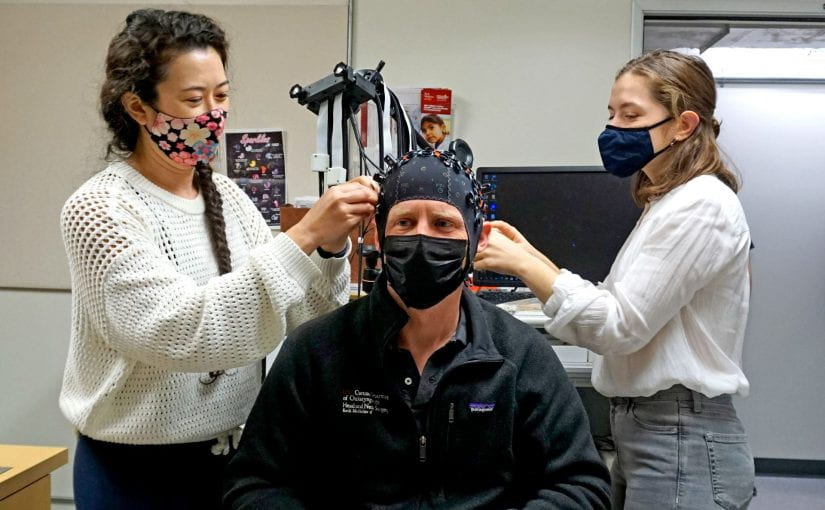Encoding Temporal Fine Structure in Cochlear Implants
Historically, cochlear implants have discarded temporal fine structure and have only transmitted timing information of relatively slow envelope fluctuations. Attempts have been made to restore temporal fine structure into cochlear implant stimulation, but it is unclear whether previous attempts were limited by implementation, lack of experience, or inherently by physiology. In our lab, we are investigating the neural mechanisms and psychophysical limits of cochlear implant listeners. Our work is unique in that it examines the perceptual and physiological plasticity that occurs when temporal fine structure is restored. We utilize psychophysics and neural investigations (eCAPs and EEG) to study improvements in pitch perception and speech comprehension by changing the auditory signal’s modulation depth. This work has been generously supported by the National Institute of Health.
Music Appreciation After Cochlear Implantation
Cochlear implants are medical devices that restore a remarkable degree of hearing to people who would otherwise be profoundly deaf. These devices generally restore enough hearing that recipients can understand spoken speech even in noisy environments. However, most recipients express dissatisfaction with music. Our work encompasses understanding the challenges that implant users face and the strategies that they adopt as they learn to appreciate music with this new way of hearing. In our lab, we use both surveys and more quantitative measures such as psychophysics and neuroimaging (EEG and fNIRS) to study the how pitch perception, speech comprehension, and quality of life are improved with active music listening, music participation, and pitch training. We also have a community of cochlear implant listeners that participate in The CI Music Hour where they are exposed to a variety of musical sounds from different artists each week. This work has been generously supported by the National Institute of Health and it’s Sound Health Network.
Team Hearing
A common theme of all of our projects is that human perception is dynamic and can be improved through active listening exercises. We are able to provide listening practice to those all around the globe through our web application called Team Hearing: a free software developed by our lab at USC for Aural Rehabilitation and Assessment. The program guides individuals in honing their speech and music perceptual abilities over time through a variety of online hearing exercises. These exercises cover topics such as pitch discrimination, speech perception, stream segregation, and musical emotion perception. Our lab team updates tests regularly and provides participants with personalized summaries of their performance. Our studies with people with hearing loss combine these considerations with novel signal processing algorithms to enhance hearing and then rehabilitate listeners to make the most of the new sensory information. By investigating the role of auditory learning and neural plasticity, we are testing the fundamental limits of hearing. Individuals can also access a variety of music listening resources and other hearing loss related updates on the Team Hearing blog. Please send an email to BIONICEAR-L@usc.edu to join our community!
